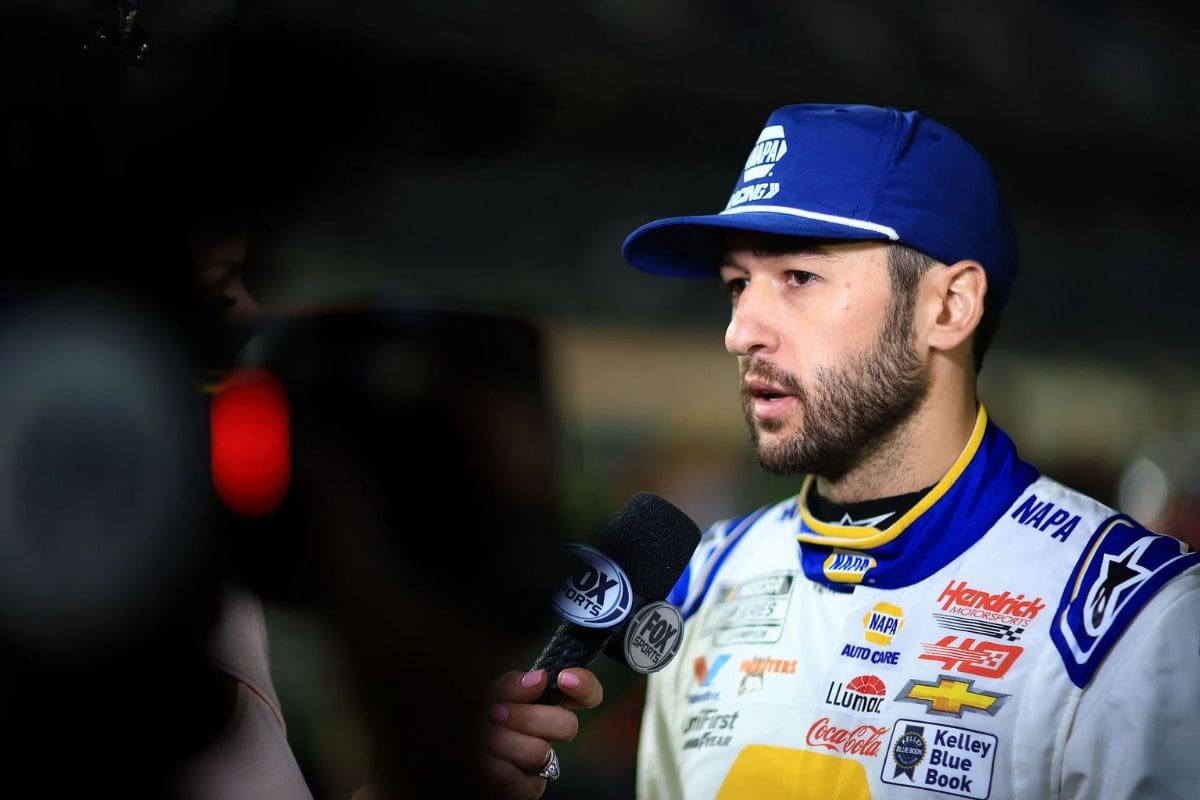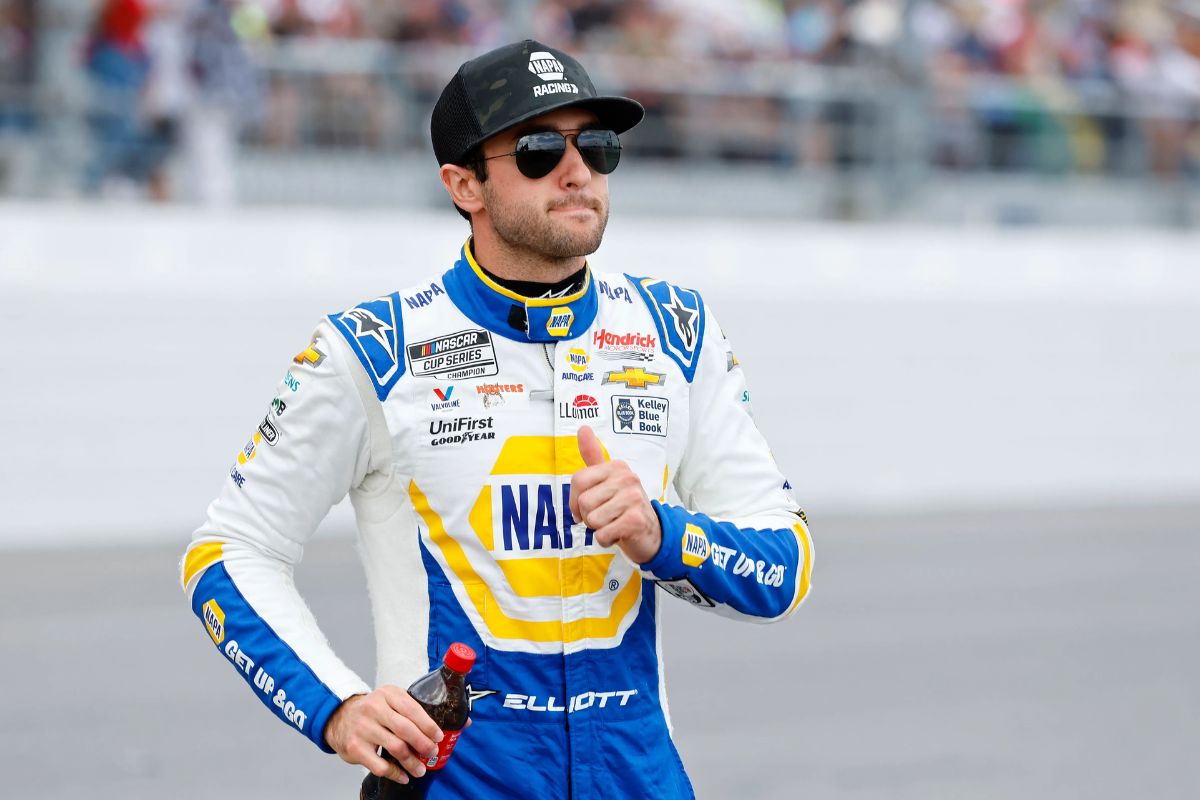Chase Elliott Top-10 Finish at Atlanta: Chase Elliott‘s Top-10 finish at the Atlanta Motor Speedway is a reflection of his skill, yet it almost unraveled due to a critical team mishap that highlighted the fragility of race day dynamics. Mechanical issues compromised the performance of the No. 9 car, forcing Elliott to adapt strategies on the fly as chaos erupted in the closing laps. This incident not only tested his resolve but also raised questions about the underlying factors that can dictate success or failure in NASCAR. As we examine the implications of this near-disaster, the conversation shifts to what this means for Elliott’s future prospects.
Key Highlights
- Chase Elliott advanced from 16th to 8th position by Stage 2, showing strong driving despite a challenging race environment.
- Car malfunctions and handling issues hindered Elliott’s progress, complicating his strategy and impacting overall performance.
- A collision with Austin Cindric during a pit stop created additional obstacles, complicating team dynamics and race execution.
- Miscommunication within the team during critical moments added tension and risked Elliott’s chances for a better finish.
- Despite setbacks, Elliott’s Top-10 finish reflects his resilience and adaptability on the track, crucial for championship contention.
Chase Elliott’s Troubles at Quaker State 400
Chase Elliott encountered a series of meaningful challenges at the Quaker State 400, a race that was essential for his playoff aspirations. Initially, Elliott displayed his resilience and skill, advancing from 16th to 8th position by the end of Stage 2, a reflection of his tactical driving and the effective performance of his team.
However, the race took a notable turn during what should have been a routine pit stop, where unforeseen malfunctions with the No. 9 Chevy threatened to derail his momentum and jeopardize his playoff positioning.
The pit stop, a critical moment in racing strategy, turned into a source of frustration for Elliott and his crew. As the stakes escalated, the tension mounted both on the driver and the pit crew. The importance of flawless execution during these moments cannot be overstated; a single misstep can lead to cascading consequences throughout the race.
With playoff spots hanging in the balance, Elliott’s team faced the intimidating challenge of overcoming this setback while maintaining their composure amid mounting tension.
In NASCAR, mental fortitude becomes as essential as driving skill. The challenges Elliott faced at the Quaker State 400 not only tested his physical abilities on the track but also his psychological resilience.
Car Malfunctions and Wrecks
The challenges faced by Elliott at the Quaker State 400 highlighted the unpredictable nature of NASCAR, particularly regarding car malfunctions and their potential to alter the course of a race. The No. 9 car’s performance was tainted by incidents that raised questions about its overall integrity and reliability. These concerns culminated in a dramatic last-lap incident, which resulted in a multi-car wreck, emphasizing the fragility of equipment in high-stakes racing environments.
While many drivers might yield to anxiety over mechanical uncertainties, Elliott exhibited remarkable resilience. His ability to compartmentalize the threat of car issues and maintain a positive outlook was vital in steering through the tumultuous conditions of the race.
In an arena where millisecond decisions can result in catastrophic outcomes, Elliott’s optimism can be seen as a tactical advantage, allowing him to focus on the immediate task at hand rather than dwelling on potential failures.
This contrast of mechanical vulnerabilities and human psychological fortitude reveals the layered complexities of NASCAR racing. Car malfunctions can swiftly shift the dynamics of competition, yet a driver’s mental state plays a significant role in overcoming such adversities.
Elliott’s Challenges and Explanation
Throughout the race at Atlanta Motor Speedway, numerous challenges tested Elliott’s mettle and decision-making abilities. The atmosphere was charged with unpredictability, as Elliott’s No. 9 Hendrick Motorsports team grappled with car handling issues evocative of those that have plagued Joe Gibbs Racing for years.
A notable moment came during a pit stop when Elliott inadvertently collided with Austin Cindric‘s left side, a mishap that threatened to compromise his race strategy.
#NASCAR … Chase Elliott on the end of the race for him pic.twitter.com/GvfBAv4oCd
— Dustin Long (@dustinlong) September 8, 2024
Adding to the complexity, Elliott found himself in a precarious three-wide situation with Corey LaJoie, where split-second decisions could mean the difference between success and disaster. This high-pressure environment highlighted Elliott’s resilience as he navigated through the chaos, demonstrating tactical awareness and quick reflexes.
The race took a turn during the final laps, where Elliott’s intentions to aid teammate Ross Chastain in advancing position spiraled into a miscalculation. Elliott reflected on the moment, acknowledging, “The top lane was fine. I was coming, trying to give Ross a pretty big push… but I was too far back.”
This frank admission emphasizes the fine line drivers must walk between aggression and caution, where a single miscalculation can alter the race’s outcome.
Mechanical Problems and Race Outcome
Steering through mechanical challenges can often determine the course of a race, and for Elliott, this proved to be a critical aspect of his performance at Atlanta. Elliott’s day was blemished by mechanical issues that not only impeded his progress but also contributed to a considerable pile-up. “I was too far in to get clear of my lane, advance, and do more,” he explained, illustrating the precarious situation he faced. The collision with Ross Chastain, which he described as getting “into his bumper,” exemplified how close-quarters racing could lead to disastrous outcomes.
“I was too far in to get clear of my lane, advance, and do more. Yeah, I was trying to get to Ross there, and I got hit. You know, I was getting into his bumper. And unfortunately, kind of got him up in the fence. It just checked our momentum.” – Elliott
Despite these hurdles, Elliott demonstrated remarkable resilience, finishing in 8th place, a feat he regarded as a positive outcome given the circumstances. His acknowledgment that “it could’ve been a lot worse” speaks to his ability to navigate adversity while maintaining focus on the broader picture.
“It was a solid day, I mean, all things considered, it could’ve been a lot worse.” – Elliott
Elliott’s experience at Atlanta highlights the intricate relationship between mechanical reliability and race strategy. While mechanical problems can thwart performance, they also provide invaluable lessons for future races, emphasizing the need for both driver and team to adapt swiftly to evolving situations on the track.
The Backstory and Future Implications
Amidst the backdrop of high-stakes racing, the narrative surrounding Chase Elliott and Ross Chastain at Atlanta extends far beyond a single event; it is rooted in a series of confrontations that highlight the complexities of driver dynamics in NASCAR. The tension between these two drivers escalated particularly during the race, where Chastain’s aggressive driving led to a considerable on-track incident involving Elliott. This rivalry intensified during subsequent races, particularly after Elliott retaliated at Sonoma, indicating that the psychological aspect of racing is as critical as the technical skill of the vehicles.
Elliott’s struggles at Atlanta serve as a clear reminder that unresolved grudges can manifest in unexpected ways, potentially jeopardizing championship aspirations. His recent admission of regret over his actions emphasizes the weight of these interpersonal conflicts, suggesting a moment of introspection that could steer his future decisions on the track.
The looming playoffs add further strain, as Elliott must navigate both his competitive instincts and the repercussions of past confrontations.
The implications of this rivalry extend beyond personal vendettas; they shape team strategies and influence the broader competitive landscape. As drivers like Denny Hamlin emphasize the importance of respect and space on the track, Elliott’s path forward may require balancing aggression with restraint.
“If you don’t give the guy in front of you room entering the corner, like everyone — in that part of the pack, very little of the field is actually running wide open. Everyone’s lifting a little bit, entering the corner. So you’ve always got to give your competitor a little room for error there, because we’re not at a track like Daytona or Talladega, where everyone’s just stuck and you can enter right on their rear bumper.” – Hamlin
As the season progresses, the resolution of these tensions could either catalyze Elliott’s performance or hinder his quest for a championship, making this narrative a critical subplot in the unfolding drama of NASCAR.
News in Brief: Chase Elliott Top-10 Finish at Atlanta
Chase Elliott’s Top-10 finish at the Quaker State 400 exemplifies the intricate dynamics of NASCAR racing, where mechanical issues and team coordination play crucial roles. The challenges faced during the event highlight the unpredictable nature of motorsport, emphasizing the necessity for robust teamwork and tactical adaptability. As Elliott navigates through these adversities, the experience gained will certainly inform future performances, reinforcing the resilience required to thrive in such a competitive environment.



